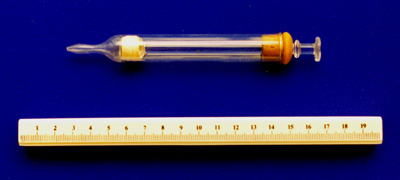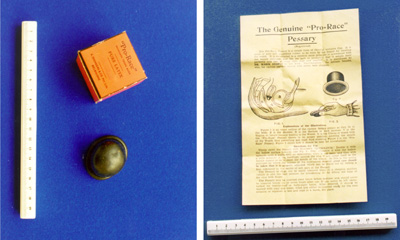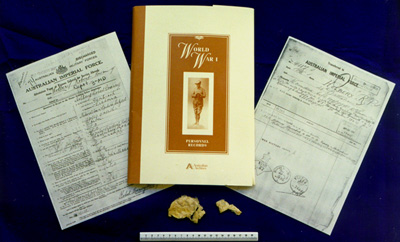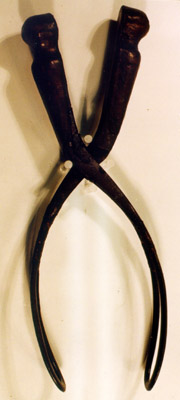M.H O'Sullivan was born in 1892 and graduated from the University of Melbourne in 1916. After returning from World War I, he set up practice in the then isolated country town Casterton, in the Western District of Victoria. He practised obstetrics until the late 1960s. The bag and its contents reflect the practice of obstetricians in the interwar period. They were donated by his son, Dr David O'Sullivan, along with copies of photos, certificates and references.
Royal Australian and New Zealand College of Obstetricians and Gynaecologists Museum

The museum is a specialist medical history museum which is housed in College House; two linked Victorian buildings located opposite the Fitzroy Gardens on the edge of the city of Melbourne. The museum has existed in various forms since 1954. In 1996, renovations at the College provided a dedicated space for the museum, which was officially opened in October 1997 by Professor Bryan Hibbard, Curator of the Royal College of Obstetricians and Gynaecologists Museum in London.
Items
Chloroform bottle

Wound syringe

This was one of the objects associated with Mrs Mary Livingstone Howlett, a midwife who practised in the Western District of Victoria from 1866. In 1887 at the age of 46, she began her 6 months of training at the Melbourne Lying-In Hospital. The collection also contains her training certificate and her certificate of Life-Governorship of the hospital. Syringes like this one were in use from c1915 to the early 1940s. It was donated to the collection by Dr Frank Forster, having been given to him by Mrs Howlett's daughter.
Pro-race Pessary

This object was donated by Professor Geoff Bishop. The cap is similar to the one advocated by Marie Stopes as a method of contraception. The accompanying information sheet also contains advertising for Vimule Jelly.
Caul

Caul is thin membrane, part of the amnion which sometimes envelops the head of the feotus at birth. It was thought by some to have protective qualities. During the First World War many servicemen carried caul as goodluck charms. This piece belonged to Private Robert Holbery, who served in France.
Smellie's obstetric forceps

William Smellie is generally given credit for improving the design of obstetric forceps to make them easier to use and less likely to damage the baby during delivery. These forceps were part of a collection of 10 representative obstetric forceps given to the Australian Regional Council of the RCOG by Professor Kellar of Edinburgh in 1956.
